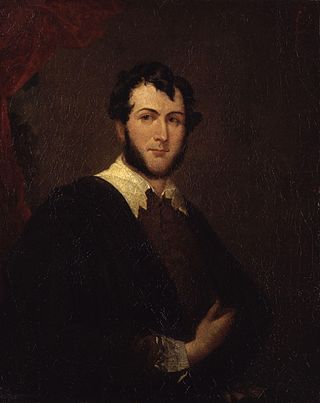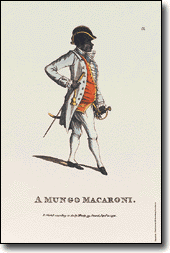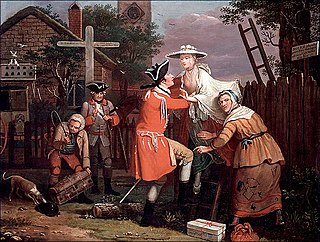Related Research Articles

Frederic George Stephens was a British art critic, and one of the two 'non-artistic' members of the Pre-Raphaelite Brotherhood.

George Cruikshank or Cruickshank was a British caricaturist and book illustrator, praised as the "modern Hogarth" during his life. His book illustrations for his friend Charles Dickens, and many other authors, reached an international audience.

John Kay was a Scottish caricaturist and engraver.

John Raphael Smith was a British painter and mezzotinter. He was the son of Thomas Smith of Derby, the landscape painter, and father of John Rubens Smith, a painter who emigrated to the United States.
Samuel Alken Sr. was an English artist, a leading exponent of the newly developed technique of aquatint.

Henry Thomas Alken was an English painter and engraver chiefly known as a caricaturist and illustrator of sporting subjects and coaching scenes. His most prolific period of painting and drawing occurred between 1816 and 1831.

Isaac Robert Cruikshank, sometimes known as Robert Cruikshank, was a caricaturist, illustrator and portrait miniaturist, the less well-known brother of George Cruikshank, both sons of Isaac Cruikshank. Just like them, he holds importance as a pioneer in the history of comics for creating several cartoons which make use of narrative sequence and speech balloons.

George Murgatroyd Woodward (1765–1809), more commonly known as George 'Moutard' ("Mustard") Woodward, was an English caricaturist and humor writer. He was a friend and drinking companion of Thomas Rowlandson.

Mary and Matthew Darly were English printsellers and caricaturists during the 1770s. Mary Darly was a printseller, caricaturist, artist, engraver, writer, and teacher. She wrote, illustrated, and published the first book on caricature drawing, A Book of Caricaturas [sic], aimed at "young gentlemen and ladies." Mary was the wife of Matthew Darly, also called Matthias, a London printseller, furniture designer, and engraver. Mary was evidently the second wife of Matthew; his first was named Elizabeth Harold.
George Daniel (1789–1864) was an English writer of miscellaneous works and book collector.

John Collet or Collett was an English satirical artist.

Robert Dighton was an English portrait painter, printmaker, and caricaturist. He was the founder of a dynasty of artists who followed in his footsteps.
Mary Dorothy George (1878–1971), née Gordon, was a British historian best known for compiling the last seven volumes of the Catalogue of Political and Personal Satires Preserved in the Department of Prints and Drawings in the British Museum, the primary reference work for the study of British satirical prints of the eighteenth and nineteenth centuries.
William Humphrey (1740?–1810?) was an English engraver and printseller.

Samuel William Fores, normally credited on his publications as S. W. Fores was an English publisher and printseller with a renowned print shop at No 3 Piccadilly, London during the 'Golden Age' of Georgian satirical prints. Fores faced prosecution several times for the allegedly libellous nature of his satires. His sons George Thomas Fores (1806–58) and Arthur Blücher Fores (1814–83) succeeded him in the business, publishing predominantly sporting prints,and the family firm continued as printsellers and publishers for over 200 years.

William Holland was a leading London print seller and radical publisher who was fined £100 and imprisoned in 1793 for a year for seditious libel.
Elizabeth Jackson was a London print seller, significant in particular for being the publisher of nearly seventy prints by the young Thomas Rowlandson in the mid 1780s.

Life in London – in full, Life in London; or, The Day and Night Scenes of Jerry Hawthorn, Esq., and his elegant friend, Corinthian Tom, accompanied by Bob Logic, the Oxonian, in their Rambles and Sprees through the Metropolis – is a book by the author and journalist Pierce Egan, first published in 1821. It depicts the progress through London of two young men and their associates, encountering both high- and low-life. The book has coloured illustrations by George and Robert Cruikshank, which were much admired at the time and subsequently.
Elizabeth Dacheray was an English publisher and print seller, with a shop at St. James Street, London. Around sixty of her prints are in the British Museum and are described in volume six of the Catalogue of Political and Personal Satires Preserved in the Department of Prints and Drawings in the British Museum.

The Caricature Magazine or Hudibrastic Mirror was a British fortnightly magazine of humorous and satirical prints, first issued in 1806 by London publisher Thomas Tegg, and edited by George Woodward, the comic author and caricaturist, upon whose designs many of its prints were originally based. The British artist Thomas Rowlandson was a leading contributor and took over its direction after Woodward's death in 1809. The magazine's lively coloured designs by leading caricaturists of the day and comparatively low pricing were an immediate success and Tegg continued to publish the magazine until 1819. Tegg also reissued back numbers as bound volumes; prints from these volumes survive in quite large numbers and are among the best known surviving Georgian social caricatures.
References
- ↑ George, M Dorothy (1870–1954). Catalogue of Political and Personal Satires Preserved in the Department of Prints and Drawings in the British Museum. London: The British Museum.
- ↑ "Edward Hawkins (British Museum Biographical details)".